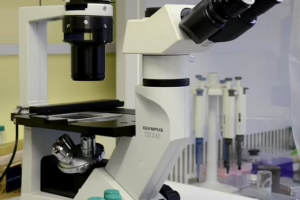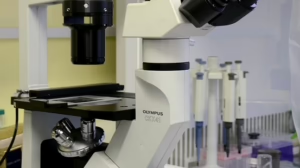The Symphony of Systems: How Your Body Works in Harmony
Introduction
The human body is a remarkable collection of systems that work together in harmony, creating a symphony of interconnected functions that sustain life. From the circulatory system pumping blood to the respiratory system bringing in oxygen, each part plays a critical role in maintaining homeostasis and overall health. This article will explore the primary systems that comprise the human body, their functions, and how they interact to create a balanced, functioning organism.
The Basics of Human Anatomy
Understanding the human body begins with recognizing its complex structure. The body is made up of various levels of organization, from cells to tissues, organs, and ultimately, organ systems. There are eleven primary organ systems that collaborate to keep our bodies functioning optimally:
- Circulatory System
- Respiratory System
- Digestive System
- Nervous System
- Endocrine System
- Musculoskeletal System
- Immune System
- Integumentary System
- Urinary System
- Reproductive System
- Lymphatic System
Each system serves specific functions, yet they are interdependent, much like musicians working together to produce a symphony.
The Circulatory System
The circulatory system, also known as the cardiovascular system, is responsible for transporting blood, nutrients, gases, and waste products throughout the body. It comprises the heart, blood vessels, and blood. The heart acts as the system’s pump, propelling oxygen-rich blood from the lungs to the rest of the body, while returning deoxygenated blood to the lungs for reoxygenation.
Functions of the Circulatory System
- Nutrient Transport: Delivers essential nutrients from the digestive tract to cells.
- Gas Exchange: Facilitates oxygen uptake and carbon dioxide removal.
- Hormone Transportation: Moves hormones from glands to target tissues.
- Temperature Regulation: Helps maintain body temperature and pH balance.
Interconnections
The circulatory system is intimately linked with the respiratory system, which brings oxygen into the bloodstream and removes carbon dioxide. Conditions affecting one system can, therefore, influence the other, illustrating the harmony between bodily systems.
The Respiratory System
The respiratory system is essential for the exchange of gases between the body and the external environment. It includes the nasal passages, pharynx, larynx, trachea, bronchi, and lungs.
Functions of the Respiratory System
- Oxygen Inhalation: Supplies oxygen necessary for cellular respiration.
- Carbon Dioxide Exhalation: Removes carbon dioxide, a byproduct of metabolism.
- Regulation of Blood pH: Helps maintain the acid-base balance of blood.
Interconnections
The respiratory system works closely with the circulatory system. Oxygen absorbed in the lungs is transported by the blood, demonstrating a vital interdependence. Respiratory issues can lead to complications in circulation, underscoring the need for both systems to function well.
The Digestive System
The digestive system breaks down food into nutrients that the body can absorb and use for energy, growth, and cell repair. It comprises the mouth, esophagus, stomach, intestines, liver, pancreas, and gallbladder.
Functions of the Digestive System
- Food Processing: Ingests, digests, and absorbs nutrients.
- Waste Excretion: Eliminates undigested food and waste products.
- Nutrient Storage: Stores nutrients like glycogen and vitamins.
Interconnections
The digestive system is critical for supplying nutrients to the circulatory system, which then distributes these nutrients throughout the body. A malfunction in digestion can lead to nutrient deficiencies impacting multiple other systems.
The Nervous System
The nervous system orchestrates communication within the body, transmitting signals between different parts via electrical impulses. It consists of the central nervous system (CNS, comprising the brain and spinal cord) and the peripheral nervous system (PNS, including all other neural tissue).
Functions of the Nervous System
- Control and Coordination: Regulates bodily functions and responses.
- Sensory Perception: Processes information from sensory organs.
- Homeostasis: Maintains internal equilibrium.
Interconnections
The nervous system regulates most of the other systems in the body. It coordinates responses to stimuli, ensures the smooth operation of bodily functions, and often acts in tandem with the endocrine system to manage complex processes.
The Endocrine System
The endocrine system consists of glands that produce hormones, which regulate numerous body functions, such as metabolism, growth, and mood. Major glands include the pituitary, thyroid, adrenal glands, and pancreas.
Functions of the Endocrine System
- Hormonal Regulation: Controls growth, metabolism, and reproductive processes.
- Homeostasis Maintenance: Helps to balance bodily functions.
- Stress Response: Manages how the body responds to stress through cortisol and adrenaline.
Interconnections
The endocrine system works in conjunction with the nervous system, particularly in stress response and metabolic regulation. For example, when the body perceives a threat, both systems collaborate to prepare the body for a fight-or-flight response.
The Musculoskeletal System
The musculoskeletal system supports the body, enabling movement and providing structure. It consists of bones, muscles, tendons, and ligaments.
Functions of the Musculoskeletal System
- Support: Provides structural integrity to the body.
- Movement: Facilitates voluntary and involuntary movements.
- Protection: Encases vital organs and protects against injury.
Interconnections
The musculoskeletal system relies on the nervous system for movement coordination and the circulatory system for supplying muscles with oxygen-rich blood during activities. Any deficits in one can impair functional capacity in each area.
The Immune System
The immune system defends the body against pathogens and diseases. It includes various cells, tissues, and organs, such as lymph nodes, the spleen, and white blood cells.
Functions of the Immune System
- Defense Mechanism: Identifies and neutralizes harmful pathogens.
- Memory Response: Remembers past infections for quicker responses in future encounters.
- Inflammatory Response: Aims to isolate and eliminate infectious agents.
Interconnections
The immune system interacts with the circulatory and lymphatic systems to transport immune cells throughout the body effectively. A well-functioning immune system can prevent infections that might otherwise disrupt other bodily systems.
The Integumentary System
The integumentary system encompasses the skin, hair, nails, and glands. It serves as the body’s first line of defense against the external environment.
Functions of the Integumentary System
- Barrier Function: Protects against pathogens and physical injuries.
- Temperature Regulation: Helps maintain body temperature through sweat and blood flow adjustments.
- Sensory Reception: Contains nerve endings that detect environmental stimuli.
Interconnections
The integumentary system works closely with the nervous system and endocrine system to regulate temperature and respond to external stimuli. Skin health can also reflect internal health, indicating issues in other bodily systems.
The Urinary System
The urinary system, also known as the excretory system, removes waste products from the blood and regulates water and electrolyte balance. It comprises the kidneys, ureters, bladder, and urethra.
Functions of the Urinary System
- Waste Removal: Filters and excretes waste products.
- Fluid Balance: Maintains water and electrolyte balance.
- Blood Pressure Regulation: Participates in regulating blood pressure through fluid balance.
Interconnections
The urinary system functions alongside the circulatory and endocrine systems to manage blood volume, pressure, and waste elimination. Hormones like aldosterone and antidiuretic hormone (ADH) regulate urine production and fluid balance.
The Reproductive System
The reproductive system facilitates procreation. In males, it includes the testes, vas deferens, and prostate gland. In females, it comprises the ovaries, fallopian tubes, uterus, and vagina.
Functions of the Reproductive System
- Gamete Production: Produces sperm and eggs.
- Hormonal Regulation: Regulates sexual differentiation and reproductive cycles.
- Gestation and Birth: Supports embryo development and childbirth.
Interconnections
The reproductive system works with the endocrine system to regulate reproductive hormones. Stress, environmental factors, and overall health can impact reproductive functions, demonstrating its interconnectedness with other systems.
The Lymphatic System
The lymphatic system maintains fluid balance and plays a role in immune responses. It consists of vessels, lymph nodes, and lymphatic organs.
Functions of the Lymphatic System
- Fluid Recovery: Returns excess interstitial fluid to the bloodstream.
- Filtration: Filters out pathogens from lymph.
- Immune Surveillance: Houses lymphocytes that respond to infections.
Interconnections
The lymphatic system complements the immune system by aiding in the transport of immune cells. Together, they maintain homeostasis and protect against disease.
The Harmony of Systems in Maintaining Homeostasis
Homeostasis is the body’s ability to maintain a stable internal environment despite external changes. Achieving homeostasis requires the intricate cooperation of all organ systems. For instance, if the body becomes too hot, the integumentary system facilitates sweating while the circulatory system increases blood flow to the skin to dissipate heat.
Case Study: The Effect of Exercise on Body Systems
When a person exercises, multiple systems work in concert to meet the increased demands on the body:
- Increased Heart Rate: The cardiovascular system boosts heart rate to pump more blood.
- Enhanced Breathing Rate: The respiratory system increases oxygen intake.
- Increased Metabolism: The digestive system adjusts to provide more energy sources.
This harmonious cooperation exemplifies the interconnectedness of the body’s systems, enabling optimal performance under stress.
Conclusion
Understanding how the various systems of the body function together in harmony provides insights into our health and well-being. The symphony of systems that constitutes our anatomy and physiology serves not only to sustain life but also to highlight the importance of holistic health approaches. Interventions in one system can affect others, emphasizing the crucial need for a balanced lifestyle, proper nutrition, regular exercise, and stress management to maintain this exquisite balance within our bodies.
By appreciating the symbiotic relationships between different systems, we can better understand our health and take effective steps toward improving it.


























Add Comment